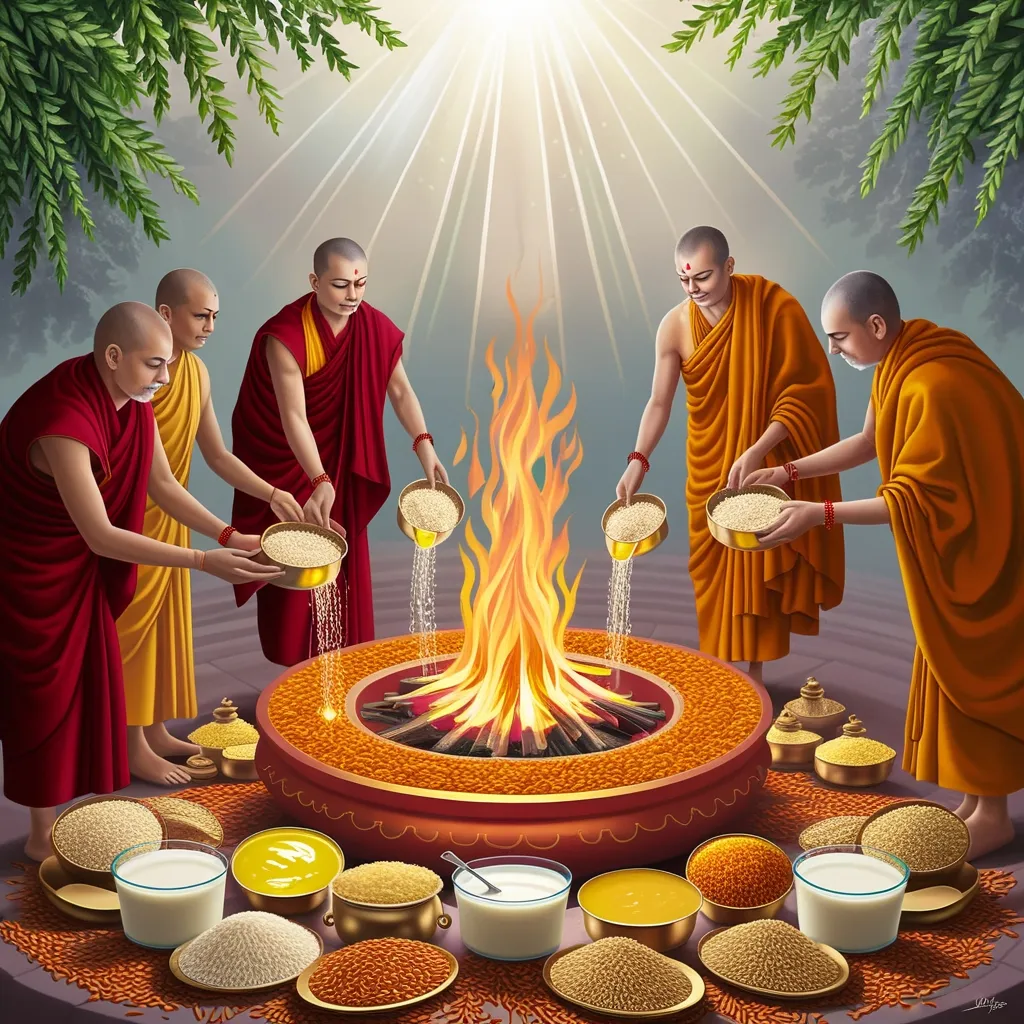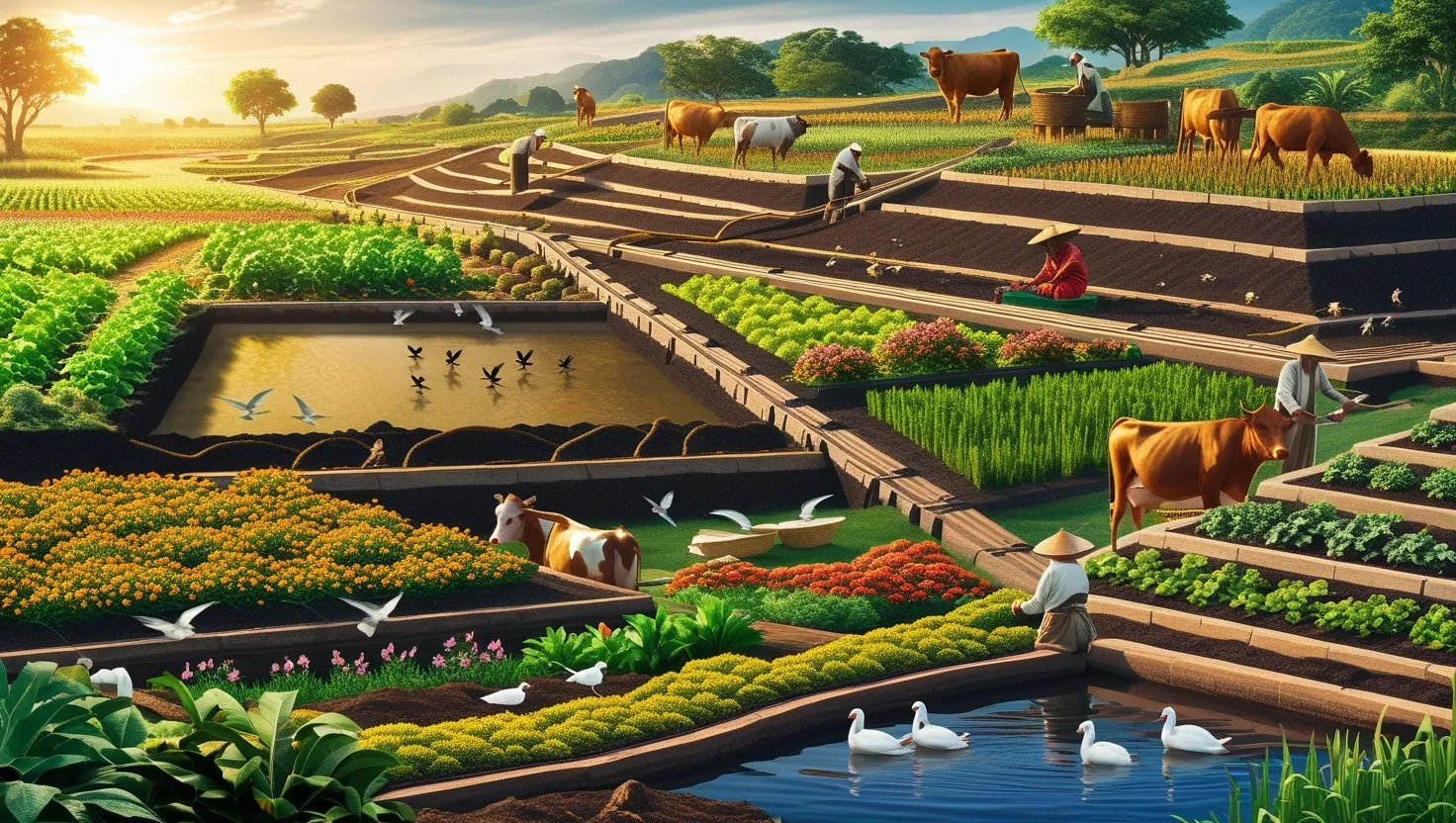In the vibrant world of Hindu rituals, the Yajur Veda stands as a key guide, especially in orchestrating sacred ceremonies. One of its essential aspects is the concept of yajna—offering sacrifices through fire to deities. We see grains and dairy products taking center stage in these offerings, underlining a deep connection with nature, spirituality, and daily life.
Grains and dairy products are more than just food items in India. They hold significant roles in Vedic rituals. During yajna, these offerings are believed to be carried by Agni, the fire god, to other gods, who then bless the sacrificer in return. Take rice and barley, for example; often used in raw form or made into cakes, these grains stand for fertility and abundance, mirroring the natural cycle of sowing, nurturing, and harvesting seeds.
Similarly, dairy products, especially ghee (clarified butter) and milk, are ritual mainstays. Ghee is commonly poured into the fire, while milk finds its place in specific ceremonies like Agnihotra, offered to the Garhapatya fire at dawn and dusk. These dairy items represent purity and nourishment fittingly, much like their roles in daily diets.
Yajna isn’t just about lighting a fire and tossing offerings. It’s a detailed ritual with several components, each holding specific meanings. The ritual fire, Agni, is an essential bridge, connecting the offerings to the divine. Typically, there are three main fires in these ceremonies: Garhapatya (householder’s fire), Anvaharyapacana (southern fire), and Ahavaniya (offertorial fire). Each fire is indispensable for performing yajna, regardless of the ritual’s complexity.
Grains and dairy products are common offerings in these fires. Purodasha, a baked grain cake, is often sacrificed. Ghee and milk also appear frequently, symbolizing one’s devotion and the quest for spiritual growth. Accompanying these offerings are mantras, believed to empower the ritual and ensure its success.
Not all Vedic rituals are grand affairs; some fit snugly into daily or seasonal routines. Agnihotra, a daily ritual, involves offering milk to the fire at sunrise and sunset. This daily activity is seen as a way to maintain spiritual balance and the household’s well-being. Seasonal rituals tied to agriculture also carry weight from the Yajur Veda. During these times, first fruits of the harvest are offered to gods, and prayers are recited for rain and prosperous yields, underlining humanity’s dependence on nature and its cycles.
Over the centuries, the concept of yajna has seen quite an evolution. From being purely ritualistic, it grew to embody personal devotion and dedication during the Upanishadic period. Texts like the Chandogya Upanishad broadened yajna to mean a chaste life of spiritual pursuit. Modern times have seen a shift towards more symbolic and vegetarian offerings, aligning with the principles of non-violence (ahimsa) and animal life preservation. Nowadays, yajna may involve grains, ghee, and other vegetarian items, keeping the ritual’s spirit alive while adapting to current ethical standards.
Mantras hold a pivotal role in yajna, acting as empowering words for the rituals. Drawn from the Vedas, these chants by priests are believed to call upon gods and ensure acceptance of the offerings. Central to yajna is fire, personified as Agni, the divine messenger conveying offerings to the gods. Kindling and consecrating the sacrificial fire is crucial, treating it with reverence. Fire becomes a spiritual bridge connecting humans with the divine in many Hindu ceremonies.
Yajna rituals aren’t solely individual acts of devotion; they often play out as community events. Public Vedic fire ceremonies occur during special occasions like religious festivals, equinoxes, solstices, full moons, and new moons. These community rituals build unity and shared spiritual goals among participants.
On a personal note, yajna offers paths to connect with the divine and express gratitude. It fosters spiritual growth, turning sacrifice and surrender into tools for inner purification and liberation (moksha). These rituals remind us of life’s interconnectedness and the significance of devotion and service.
The Yajur Veda’s focus on grains and dairy in yajna underscores the deep bond between spirituality and nature. Through fire, mantras, and offerings, these rituals form the heart of Vedic worship. Whether performed daily or seasonally, they play an essential role in Hindu spirituality by nurturing community, devotion, and growth. Understanding these ancient rituals offers rich insights and ongoing inspiration.






